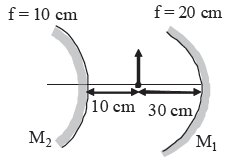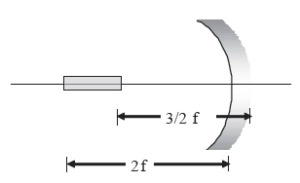Mark the correct options :
No solution provided for this question.
Mark the correct options :
No solution provided for this question.
Which of the following (referred to a spherical mirror) depend on whether the rays are paraxial or not ?
No solution provided for this question.
The image of an object placed perpendicular to the principal axis of a mirror, will be erect if :
No solution provided for this question.
An object O is placed in front of a plane mirror and concave mirror as shown in fig. If ‘f’ is the focal length of concave mirror then the separation
between the two mirrors so that the images formed by mirrors coincide:
No solution provided for this question.
A light ray traveling parallel to the principal axis of a concave mirror strikes the mirror at angle of incidence q. If radius of curvature of the mirror
is R, then after reflection, the ray meets the principal axis at distance d from the centre of curvature, then d is –
No solution provided for this question.
In the figure shown find the total magnification after two successive reflections first on M1 & then on M2 (Take Ist reflection from concave mirror)

No solution provided for this question.
A linear object is placed along the axis of a mirror as shown in fig. If ‘f’ is the focal length of the mirror then the length of image is –

No solution provided for this question.
A short linear object of length L lies on the axis of a spherical mirror of focal length ƒ at a distance u from the mirror. Its image has an axial length L’
equal to :
No solution provided for this question.